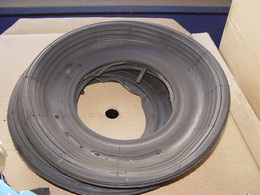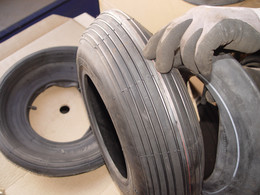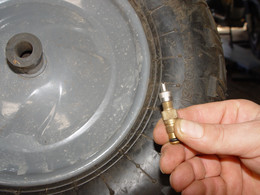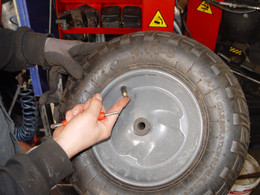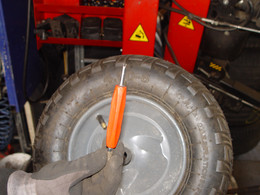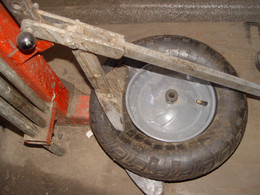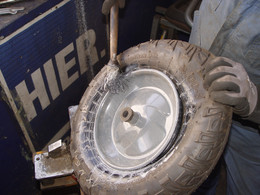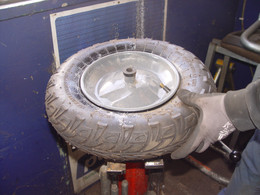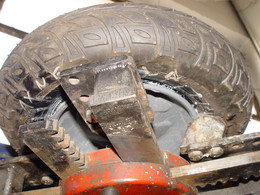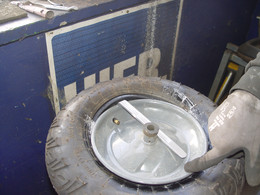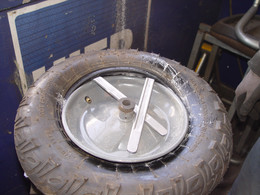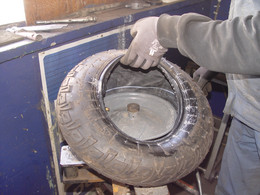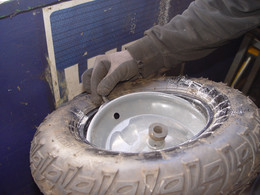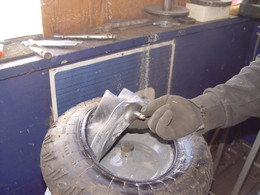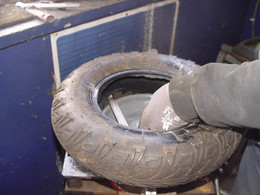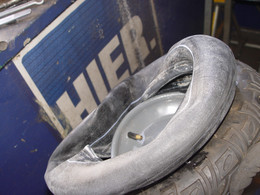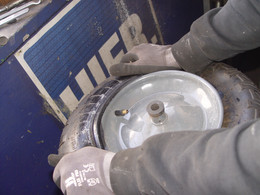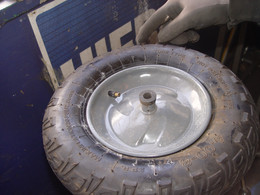Preventive also applies here – the correct tyre pressure prolongs the life of the tyre.
If it's sufficient and, above all, has the optimal tread pattern, the work is made easier.
To put on the new tyre cover, the old one has to come off. Even when demounting, there is a lot to consider to avoid damaging the rim and the cover.
Loosening the cover works best with the mounting device. Here, you start opposite the valve, with the loosening of the cover from the rim.
Good lubrication means good driving – an old saying. Once the cover is loosened, grease is applied between the rim and the bead of the cover: assembly grease is ideal for this: This facilitates demounting as well as mounting and even the rim and cover.
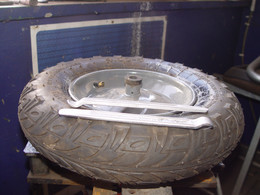
The safest way is to use the mounting levers. They are rounded and with the curvature at the end they grip well in the space between the rim and the tyre.
How do I recognise the quality?
Very simple – you can smell quality on small tyres!! The less they smell, the better the quality. This applies to both tyres and tubes. The thickness of a tube alone, on the other hand, does not say anything about its loading capacity. However, the thickness of a tube is a tangible criterion for its durability. On the market, there are also tubes made of synthetic rubber, which can be much thinner but just as durable as the tubes with a high proportion of natural rubber.
Preventive also applies here – the correct tyre pressure prolongs the life of the tyre.
If it's sufficient and, above all, has the optimal tread pattern, the work is made easier.
To put on the new tyre cover, the old one has to come off. Even when demounting, there is a lot to consider to avoid damaging the rim and the cover.
Loosening the cover works best with the mounting device. Here, you start opposite the valve, with the loosening of the cover from the rim.
Good lubrication means good driving – an old saying. Once the cover is loosened, grease is applied between the rim and the bead of the cover: assembly grease is ideal for this: This facilitates demounting as well as mounting and even the rim and cover.

The safest way is to use the mounting levers. They are rounded and with the curvature at the end they grip well in the space between the rim and the tyre.
How do I recognise the quality?
Very simple – you can smell quality on small tyres!! The less they smell, the better the quality. This applies to both tyres and tubes. The thickness of a tube alone, on the other hand, does not say anything about its loading capacity. However, the thickness of a tube is a tangible criterion for its durability. On the market, there are also tubes made of synthetic rubber, which can be much thinner but just as durable as the tubes with a high proportion of natural rubber.

![[Translate to English:] [Translate to English:]](/fileadmin/_processed_/9/b/csm_Werkstatttipp_Kleinreifen_50924e2f2d.jpg)
